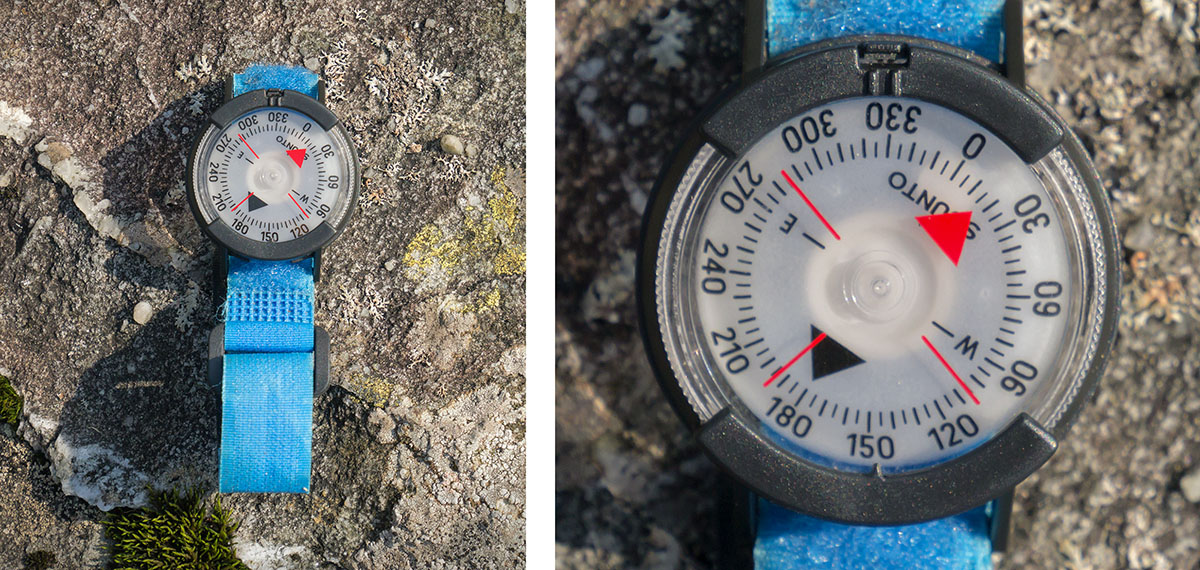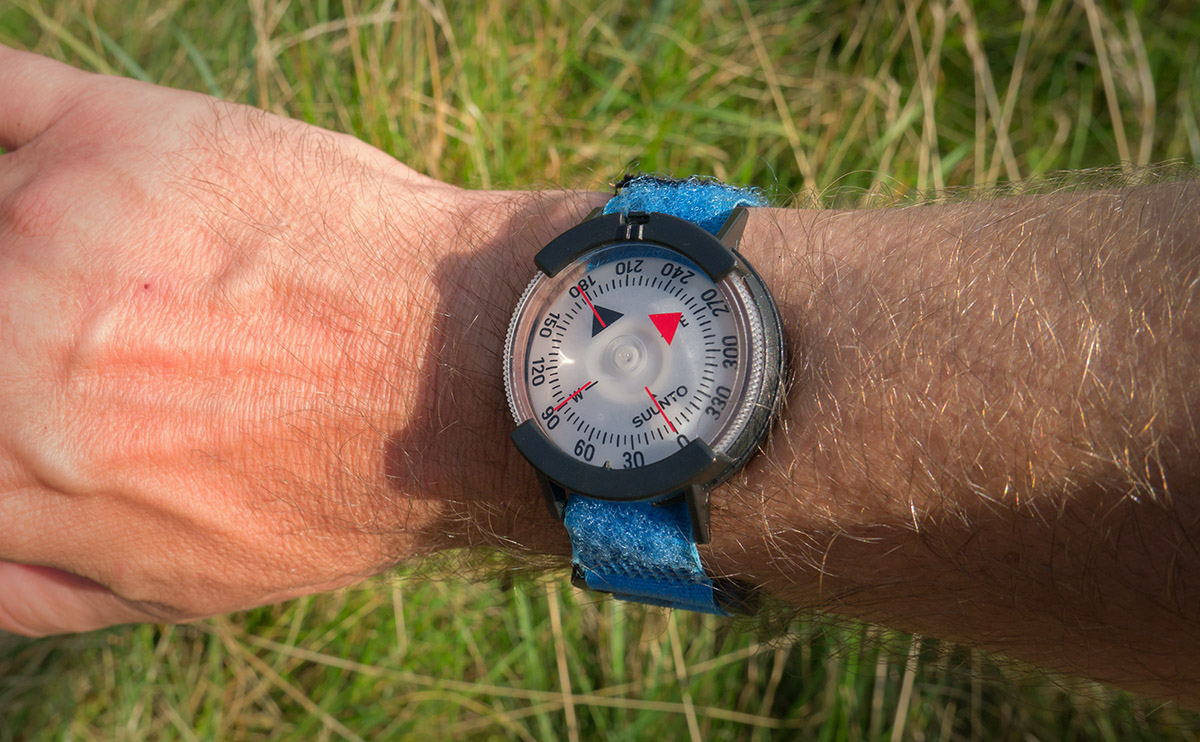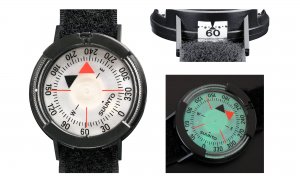Suunto's M-9 Sighting Wrist Compass
Special Mentions
Over time we've come across a number items that have really impressed us and we'd like to draw attention to, but ...
- either they don't quite fit into our rather strictly defined / narrow categories, or
- due to their high price-point, they cannot compete with our existing recommendations (mainly on the value score), or
- they will become our top choice, but only if and when our existing recommendation becomes unavailable (i.e. this item is the current heir in waiting but is just marginally edged out by our current recommendation).
So for such items we've created "special mentions" (SM). These "reviews" don't get a rating score and may receive less in-depth coverage and don't feature in our catalogue, instead the SM write-ups fall somewhere between a post and a formal review. They are identified by a blue Scramble mountain logo.
As always, we're looking at the Suunto M-9 Wrist Compass from the point of view of long distance trekking over tough terrain.
Kit Tests: Summer
Disclaimer: None required (item not provided by manufacturer)
Datasheet
| Materials (Body / Bezel): Scratch Resistant Acrylic (Plastic) | 100% |
| Liquid-filled, sapphire jeweled bearing | - |
| Luminescent compass card | - |
| Water resistance: insensitive to water pressure | Waterproof |
| Accuracy / Resolution | 5° / 5° |
| Dimensions (W x H x D) | 41 x 47 x 14 mm |
| Weight | 16 g |
| Manufacturer RRP | £39.00 |
Scramble Review
Contents
Introduction: Suffering In The Right Direction
When you wear a compass around your neck, as you likely do with something like Suunto's A-30 baseplate compass, in stormy conditions you have a choice: either you have your compass available outside your waterproofs, flapping around smacking you in the face, or you have it tucked away, slipped in somewhere between the collar bone and your pack's sternum strap. As such, in foul conditions, I found I wasn't checking bearings as often as I should. This led us to seek out a decent compass that one could quickly refer to, ensuring the user at least remains on the right track while mother nature pukes on them.
Features / Overview
Resolution & Accuracy
Obviously, the smaller the compass, the lower the resolution and thus its likely accuracy. The Suunto M-9 has a decent sized face and is somewhere between a button compass and a regular baseplate. Its accuracy / resolution is rated at 5° as compared to the Sunnto A-30 which has twice the resolution, at 2.5°.
We thought it would be interesting to test the M-9 compass by relying on it solely for the 220 miles of the 2024 Summer Kit Test. However, there were two incidents where I succumbed to fear and doubt and used the Suunto A-30 to check the M-9's readings. It turned out that the M-9 was indeed pointing me in the right direction.
One of the reasons for my niggling doubts was that the M-9 can be a bit sticky (fussy). The compass face / needle floats in a liquid and, if the face isn't quite horizontal, it can stick. Once you know this, you get used to making minor swivelling movements to check the face / needle is floating freely. But at first, I admit I found this a little disconcerting.
Another reviewer made a good observation about the M-9 when they stated "it is designed to make it easy to see if you are going the right way but not to find your way".
I think that's a little harsh but perhaps reasonably fair. If I were up in the mountains with low visibility I'd use my baseplate compass and pay very close attention to my map. But when you're crossing open stretches or have good visibility and just need to keep a check on your bearings, the M-9 is accurate enough and when it's hammering it down, very welcome indeed.
Sighting
The Suunto M-9 is a sighting compass and has a bearing scale on its side (see the product images below). The basic idea is that you use the upper sighting notches to sight your waypoint, then turn the serrated bezel ring until the red arrow overlays the black (north) arrow. This then provides a bearing that can be read on the side and when looking at the face, as long as the red overlays the black, you're headed in your sighted direction (here's a helpful YouTube video explaining all this).
The sighting feature may come in handy, but I didn't find myself using it. Instead, I'd just check the map to see which direction I need to head in and then set the red arrow as a reminder of that bearing.
 The Suunto M-9 Wrist Compass has clear markings and a decent sized face.
The Suunto M-9 Wrist Compass has clear markings and a decent sized face.
Glow In The Dark
The entire face of the M-9 is luminous, so when operating at night with a head torch, the M-9 is no less easy to use than during the day. A useful feature.
Velcro Strap
The strap that comes with the M-9 is nothing to write home about and considering the M-9's price, should be better. That said, I like lightweight velcro straps and tend to wear them quite loose and so replaced mine with a blue (2 x 30cm) one (pictured above). The M-9, at just 16g, is so light you forget you're wearing it.
Any Negatives?
We've already covered the negatives, but just to re-cap:
- The suspended dial can stick if the face is not horizontal and so to be absolutely sure of the reading a swivel of the arm on the horizontal plane is sometimes required to check the reading is correct.
- The velcro wrist strap is rather cheap and doesn't match the quality of the compass.
- Though not hideously expensive, it's not that cheap either (£10 more expensive than the Suunto's A-30 baseplate compass).
Conclusion
The Suunto M-9 Wrist Compass is an extemely light, durable, weather resistant and reliable compass. Whether one uses its sighting facility or not, it serves a role as both a backup compass and as an ever-present quick reference to ensure you're on the right track. Where it really shines is in stormy conditions, allowing ones main compass to remain cocooned under a zipped-up hardshell, while bearings are taken from the wrist. A handy little tool and worthy of a special mention.
Product Images
Last Updated: 15/02/25











